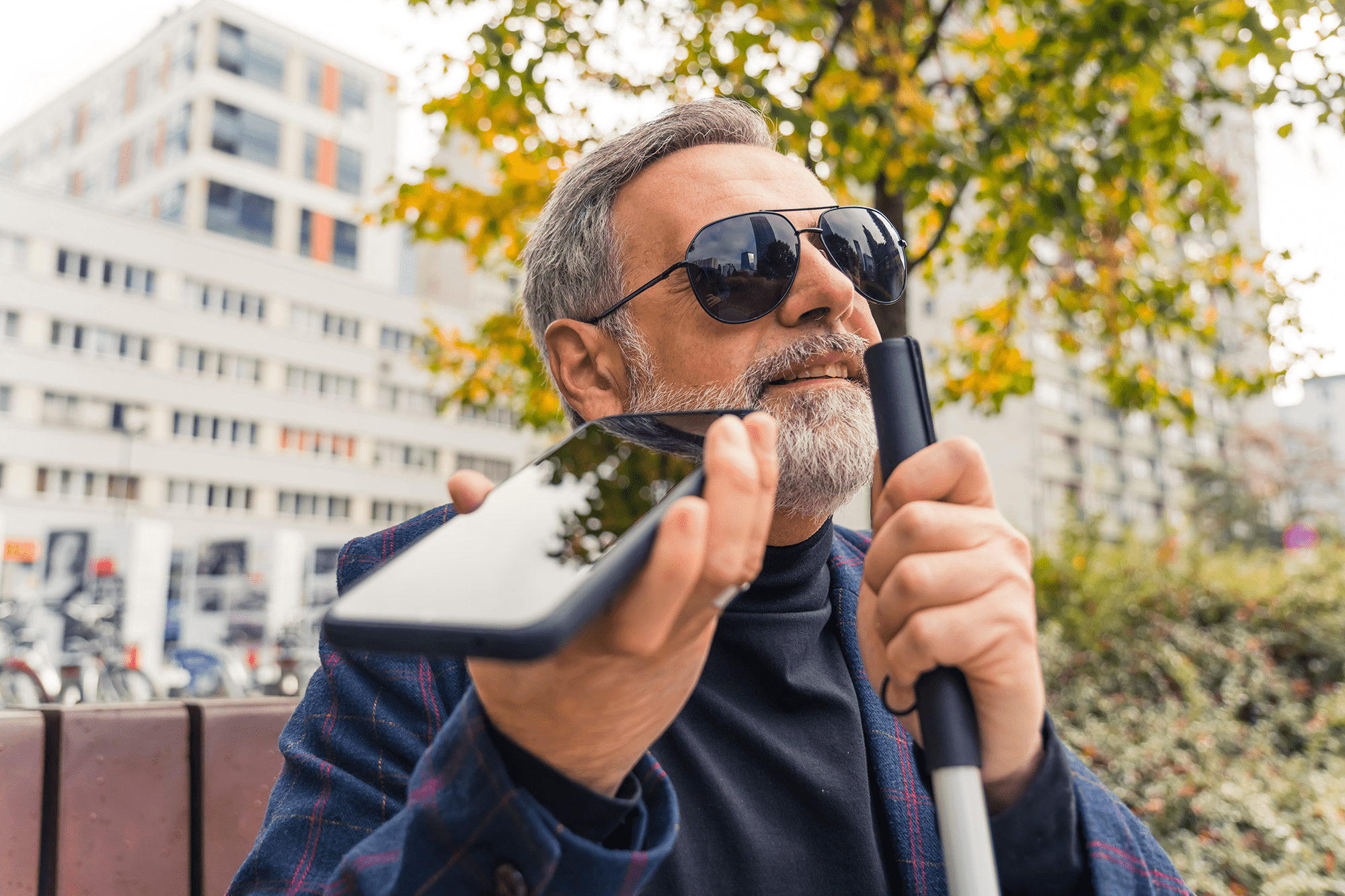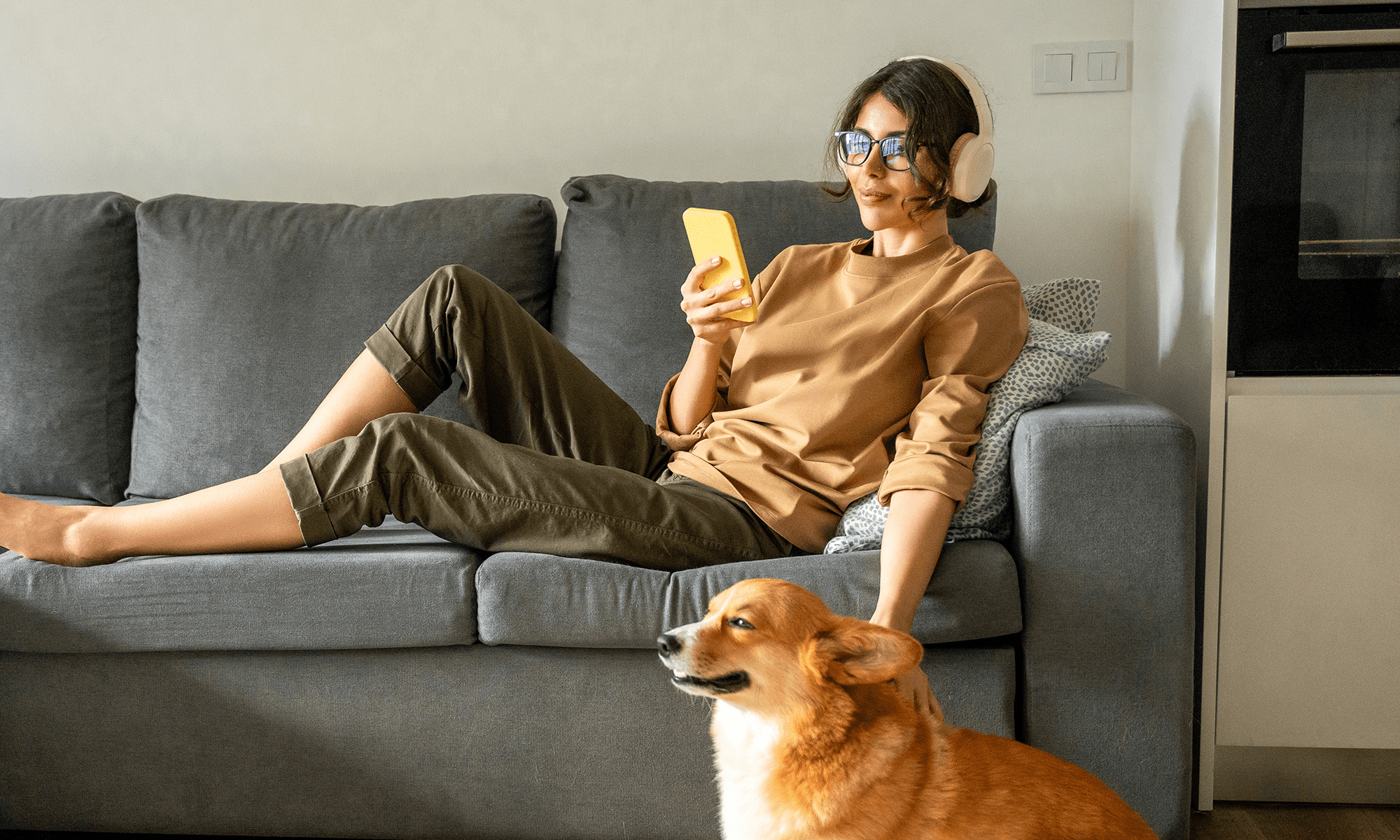Accessibility research
We help you design products everyone can use with clarity, confidence, and dignity.
If your product doesn’t work for people with disabilities, it doesn’t work. Designing for accessibility isn’t just the right thing to do, it’s how you make something useful, usable, and successful.

How we support accessibility
We work with teams to evaluate, improve, and design user experiences that include more people, across more contexts. Whether you’re building a voice assistant, medical device, or digital service, we help you spot barriers early and remove them with confidence.

We test with people who live it
We recruit participants with a wide range of needs, including blind and low-vision users, people with limited mobility or dexterity, deaf and hard-of-hearing participants, neurodiverse individuals, older adults, and those managing chronic health conditions. We’ve worked with users across genders, generations, and cultures to ensure truly inclusive experiences.

We meet users where they are
In-home sessions, remote testing with assistive tech, and research with caregivers. Our studies reflect real-world use, not lab-only results. We provide accommodations like ASL interpreters, screen reader support, and alternative input methods to ensure every voice is heard.

We look beyond checkboxes
WCAG guidelines are a good start, but real accessibility means more than compliance. We combine standards-based audits with human-centered testing to uncover what actually works for users. Our Check UX: Accessibility tool provides a score and a clear roadmap to improve usability for all.
What we do

Usability testing
We test apps, websites, and devices with people using screen readers, voice controls, alternative input methods, and other assistive tools.

Inclusive design research
We uncover how users of all identities, genders, and abilities interact with your product and where the design might exclude or confuse them.

Heuristic evaluations
We review your product against WCAG 2.1 guidelines, and we test it through real-life scenarios to spot gaps that standards alone miss.

Workshops
We run interactive sessions to help your team incorporate accessibility into every stage of product development, from early design to post-launch updates.
Why accessibility matters
Our strategic recruiting partnerships support project success
Accessible, or A11y, research hinges on recruiting special populations. Our established relationships with recruiters, research facilities, clinical sites, and other project vendors support our consistently high-quality service delivery and project success. We have years of experience as strategic partners and we pass our cost savings and confidence in their quality along to you.
Low vision
- Central field loss
- Peripheral field loss
- Other field loss
- Night blindness
- Blurred vision
- Hazy vision
- Light/Contrast Sensitivity (Photophobia)
- Low visual acuity (partially sighted)
- Partial blindness
- Blind
- People who use screen readers
Hearing-impaired
- Deaf – cannot use assistive devices
- Degree of hearing loss (mild, moderate, severe, profound)
- Hearing Loss / hard of hearing
- People who use:
- Hearing aids
- Implants
- Read lips
- Use sign language
- Sign language interpreters
- Captioning
- Text messaging
- Telephone amplifiers
- Flashing and vibrating alarms
- Audio loop systems
- Infrared listening devices
- Portable sound amplifiers
- TTY
Low-mobility
- Upper limb(s) disability
- Lower limb(s) disability
- Manual dexterity
- Disability in coordination with different organs of the body
- Lack of strength to walk, grasp, or lift objects.
- People who use:
- Wheelchairs
- Walkers
- Joysticks
- Head pointers
- Trackballs
- Eye- or head-trackers
- Augmentative and alternative communication (AAC)
Our experience with special populations
Our recruit experience includes HCPs in virtually every specialty, a variety of patient populations, and individuals with low-vision, hearing-impairments, and low-mobility. Here is a sample of participants we’ve recruited:
HCPs
- Psychiatrists
- Nurses
- Caregivers
- Surgeons
- Pharmacists
- Critical Care Doctors
- Primary Care Physicians
- Nutritionists
- Cardiologists
- Anesthesiologists
- Social Workers
- Medical Assistants
- Neurologists
Patient populations
- Visually impaired
- Schizophrenia
- Alzheimer’s
- Bipolar Disorder
- Diabetes
- Psoriasis
- Crohn’s
- Hemophilia
- Rheumatoid Arthritis
- Multiple Sclerosis
- Parkinson’s
- Ankylosing Spondylitis
- Major Depressive Disorder
- Migraine
- Cancer
Real-world impact
Designing mobile accessibility for blind users
We worked with a global telecom brand to improve accessibility in their mobile device portfolio. Testing with over 200 blind and low-vision participants, we found that users preferred mainstream devices with robust built-in accessibility features over “specialized” phones. This insight helped shift the company’s product strategy toward inclusive, universal design.
Improving access to mental health care
A healthcare company building a mental health app asked us to evaluate accessibility and tone. Users with depression and anxiety highlighted challenges with language that felt clinical or condescending. Based on our findings, the team adjusted content, simplified navigation, and improved localization, leading to stronger adoption in UK and EU markets.
Blogs
Design for inclusion & accessibility
Inclusive design is not a checkbox; it’s a commitment to doing better. Learn how inclusive UX research drives better outcomes, stronger products, and broader market reach.













